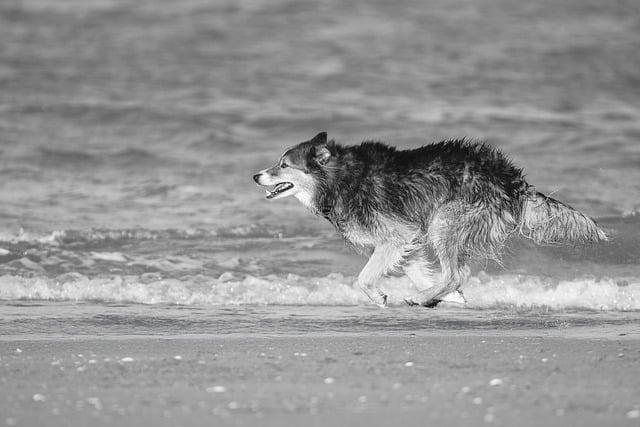Imagine a playful golden retriever named Max, who eagerly greets his owner each day with the same squeaky toy. At first, it’s a source of endless joy, but as weeks pass, Max’s enthusiasm wanes. He stares longingly at the untouched tennis balls and tug ropes, his tail wagging less with each passing day. Just like us, dogs crave variety and stimulation. To keep their spirits high and minds sharp, it’s essential to rotate their toys. A simple change can reignite their excitement and strengthen your bond. Don’t let boredom set in—keep playtime fresh and engaging!
Contents
- Understanding Canine Boredom and Its Impact on Playtime
- The Role of Variety in Keeping Your Dog Engaged
- Choosing the Right Toys to Stimulate Your Dogs Interest
- Strategies for Rotating Toys to Maximize Engagement and Fun
- Q&A
Understanding Canine Boredom and Its Impact on Playtime
Canine boredom is a subtle yet significant issue that can affect your dog’s overall well-being and behavior. Just like humans, dogs thrive on stimulation and variety. When they are presented with the same toys day in and day out, they may lose interest, leading to a lack of engagement during playtime. This boredom can manifest in various ways, including destructive behaviors, excessive barking, or even anxiety. Understanding this phenomenon is crucial for pet owners who want to ensure their furry friends remain happy and healthy.
One of the primary reasons dogs may become bored with their toys is the lack of novelty. Dogs are naturally curious creatures, and they enjoy exploring new textures, sounds, and challenges. When a toy becomes predictable, it loses its appeal. To combat this, consider rotating your dog’s toys regularly. By introducing new toys or reintroducing old favorites, you can reignite their interest and keep playtime exciting. This simple strategy can make a world of difference in your dog’s enthusiasm for play.
Moreover, the impact of boredom extends beyond just playtime. A bored dog may seek alternative forms of entertainment, which can lead to undesirable behaviors. For instance, they might chew on furniture, dig in the yard, or engage in other destructive activities. By providing a variety of toys and interactive play options, you can channel their energy into positive outlets. Engaging your dog in different types of play, such as fetch, tug-of-war, or puzzle toys, can also stimulate their minds and help alleviate boredom.
Lastly, it’s essential to recognize that not all toys are created equal. Some dogs may prefer certain types of toys over others, and understanding your dog’s preferences can enhance their play experience. **Consider the following factors when selecting toys**: durability, size, texture, and sound. By choosing toys that cater to your dog’s individual tastes and needs, you can foster a more engaging and fulfilling playtime experience. Remember, a well-stimulated dog is a happy dog, and investing in their playtime is an investment in their overall happiness and health.
The Role of Variety in Keeping Your Dog Engaged
Dogs, much like humans, thrive on stimulation and variety. When they are presented with the same toys day in and day out, their interest can wane, leading to boredom and a lack of engagement. To keep your furry friend mentally and physically active, it’s essential to introduce a diverse range of toys and activities that cater to their natural instincts and curiosity.
Consider rotating your dog’s toys regularly. Instead of leaving all their toys out at once, try putting some away for a week or two and then swapping them out. This simple act can reignite their excitement and curiosity. **Interactive toys**, such as puzzle feeders or treat-dispensing balls, can also provide a fresh challenge that keeps them engaged and encourages problem-solving skills.
In addition to toys, incorporating different types of activities can significantly enhance your dog’s daily routine. Engaging in **varied exercises** such as agility training, scent work, or even simple games of hide and seek can stimulate their minds and bodies. These activities not only break the monotony but also strengthen the bond between you and your pet, making playtime more enjoyable and fulfilling.
Lastly, don’t underestimate the power of socialization. Arranging playdates with other dogs or visiting dog parks can introduce new experiences and interactions that are vital for your dog’s emotional well-being. **Variety in their social encounters** can lead to improved behavior and a happier, more balanced pet. By embracing diversity in play and interaction, you ensure that your dog remains engaged, happy, and healthy.
Choosing the Right Toys to Stimulate Your Dogs Interest
When it comes to keeping your dog engaged and entertained, the choice of toys plays a crucial role. Dogs, much like humans, thrive on variety and stimulation. Selecting toys that cater to their natural instincts can significantly enhance their interest and prevent boredom. **Interactive toys**, such as puzzle feeders or treat-dispensing balls, challenge your dog mentally and encourage problem-solving skills. These toys not only keep them occupied but also provide a rewarding experience as they work to uncover hidden treats.
Another important factor to consider is the **material and texture** of the toys. Dogs have different preferences, and some may enjoy the feel of rubber, while others might prefer plush toys. Offering a mix of textures can keep your dog intrigued. For instance, a durable chew toy can satisfy their urge to gnaw, while a soft toy can provide comfort during downtime. By rotating these options, you can maintain your dog’s interest and ensure they have something new to explore regularly.
In addition to texture, consider the **size and shape** of the toys. A toy that is too small may pose a choking hazard, while one that is too large might be difficult for your dog to handle. Selecting toys that are appropriately sized for your dog’s breed and age can enhance their play experience. Furthermore, toys that can be thrown, tugged, or fetched can encourage active play, which is essential for your dog’s physical health and mental stimulation.
Lastly, don’t underestimate the power of **scent and sound** in toys. Many dogs are attracted to toys that squeak or crinkle, as these sounds mimic the noises of prey. Similarly, toys infused with enticing scents can capture your dog’s attention and keep them engaged for longer periods. By incorporating a variety of sensory experiences into your dog’s toy collection, you can create an enriching environment that fosters curiosity and playfulness, ultimately reducing the chances of boredom.
Strategies for Rotating Toys to Maximize Engagement and Fun
To keep your furry friend engaged and entertained, consider implementing a toy rotation system. This approach not only prevents boredom but also stimulates your dog’s curiosity and playfulness. By regularly changing the toys available to your dog, you can create a sense of novelty that keeps their interest piqued. Here are some effective strategies to make the most of your toy rotation:
- Establish a Schedule: Create a rotation schedule that works for you and your dog. For instance, you might introduce new toys every week or bi-weekly. This predictable pattern helps your dog anticipate playtime and look forward to new experiences.
- Group Toys by Type: Organize toys into categories such as chew toys, interactive puzzles, and fetch toys. Rotate these groups to provide a balanced mix of activities that cater to different play styles and preferences.
- Incorporate Seasonal Themes: Use seasonal changes to inspire your toy rotation. For example, during summer, focus on water toys, while winter can feature plush toys for cozy indoor play. This not only keeps things fresh but also aligns with your dog’s natural instincts.
- Observe and Adapt: Pay attention to your dog’s reactions to different toys. If a particular toy sparks excitement, consider keeping it in the rotation longer. Conversely, if a toy is consistently ignored, it may be time to retire it or donate it to a local shelter.
In addition to rotating toys, consider the importance of engaging your dog in interactive play. Incorporating your presence into playtime can significantly enhance the experience. Activities such as tug-of-war, fetch, or hide-and-seek not only provide physical exercise but also strengthen the bond between you and your pet. By being an active participant, you can make even the simplest toys feel new and exciting.
don’t underestimate the power of DIY toys. Homemade toys can be easily crafted from household items, offering a unique twist to your dog’s playtime. Items like old t-shirts, tennis balls, or cardboard boxes can be transformed into engaging toys that stimulate your dog’s mind and body. Regularly introducing these homemade creations into the rotation can add an element of surprise and creativity to your dog’s play routine.
Q&A
-
Do dogs get bored of the same toys?
Yes, dogs can get bored of the same toys, just like humans can tire of the same activities. Variety is essential for keeping your dog mentally stimulated and engaged.
-
How can I tell if my dog is bored with their toys?
Signs of boredom may include ignoring their toys, showing disinterest during playtime, or seeking out alternative activities, such as chewing on furniture or shoes.
-
What can I do to prevent my dog from getting bored?
To keep your dog entertained, consider rotating their toys regularly, introducing new toys, and engaging in interactive play. This will help maintain their interest and excitement.
-
Are certain types of toys better for preventing boredom?
Yes, toys that encourage problem-solving, such as puzzle toys or treat-dispensing toys, are excellent for mental stimulation. Additionally, toys that promote physical activity, like fetch balls or tug ropes, can also help keep your dog engaged.
keeping your dog’s playtime engaging is essential for their happiness and well-being. Regularly rotating toys and introducing new ones can stimulate their minds and prevent boredom. Invest in your dog’s joy—it’s a small effort for a big reward!

大家好,我是彼得潘,專業的手法身體治療師。我喜歡探索和研究各種主題,並透過與人工智慧的合作分享專業、實用、有趣的文章。我們定期進行人工審核,以確保內容的準確性。如果您發現文章中有任何不準確的地方,請隨時與我們聯繫,我們會及時糾正。您可以透過 [email protected] 與我們聯繫。



